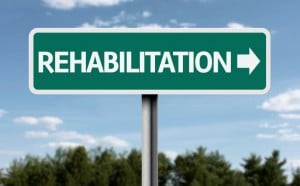Proposition 47 passed and the entire criminal justice system is scrambling to implement it. Thousands of current prisoners will be released in the next few months—some maybe even in time to be home with their families for Christmas. Thousands of people will receive misdemeanor convictions instead of felonies, greatly affecting those being charged and their families for many years, if not entire lives. Those who received felony charges as a result of the “three strikes” law will also have the option to re-petitioning their cases in court.

The money saved from the reduced sentences will be used for school truancy and dropout prevention (25%), mental health services and drug abuse treatment (65%), and victim services (10%). http://www.scpr.org/news/2014/10/17/47466/election-2014-faq-prop-47-criminal-sentencing/
Why is more money for mental health services a good thing? According to the website Mother Jones, “In California, the number of mentally ill prisoners has doubled over the last 14 years. Mentally ill inmates in state prisons serve an average of 15 months longer. Lockups have become our country’s go-to provider of mental health care: the nation’s three largest mental health providers are jails. There are ten times as many mentally ill people behind bars as in state hospitals. Sixteen percent of inmates have a severe mental illness like schizophrenia, which is two and a half times the rate in the early 1980s. Prop 47 will provide more money for mental health programs that have been proven to drop incarceration rates. For example, when Nevada County, California started an Assisted Outpatient Treatment program, average jail times for the mentally ill dropped from 521 days to just 17.”
Why is more money for drug abuse prevention and treatment a good thing? According to a report by the National Center on Addiction and Substance Abuse (CASA) at Columbia University, alcohol and drugs are significant factors in the majority of crimes. For example, in 2006, alcohol and other drugs were involved in 78% of violent crimes, 83% of property crimes, and 77% of public order, immigration, weapon offenses, probation/parole violations. By preventing people from abusing drugs and alcohol, and treating those who are already entrenched in substance abuse problems, crime will decrease.
CASA’s Vice President and Director of Policy Research and Analysis, Susan E. Foster, sums it up well, “States complain mightily about their rising prison costs; yet they continue to hemorrhage public funds that could be saved if they provided treatment to inmates with alcohol and other drug problems and stepped up use of drug courts and prosecutorial drug treatment alternative programs.”




